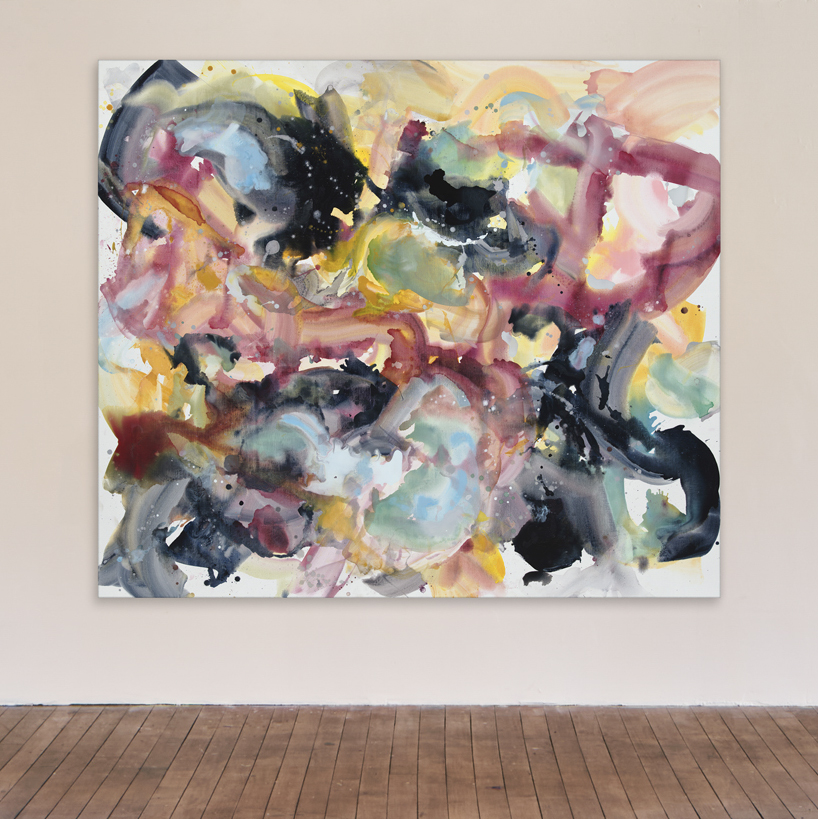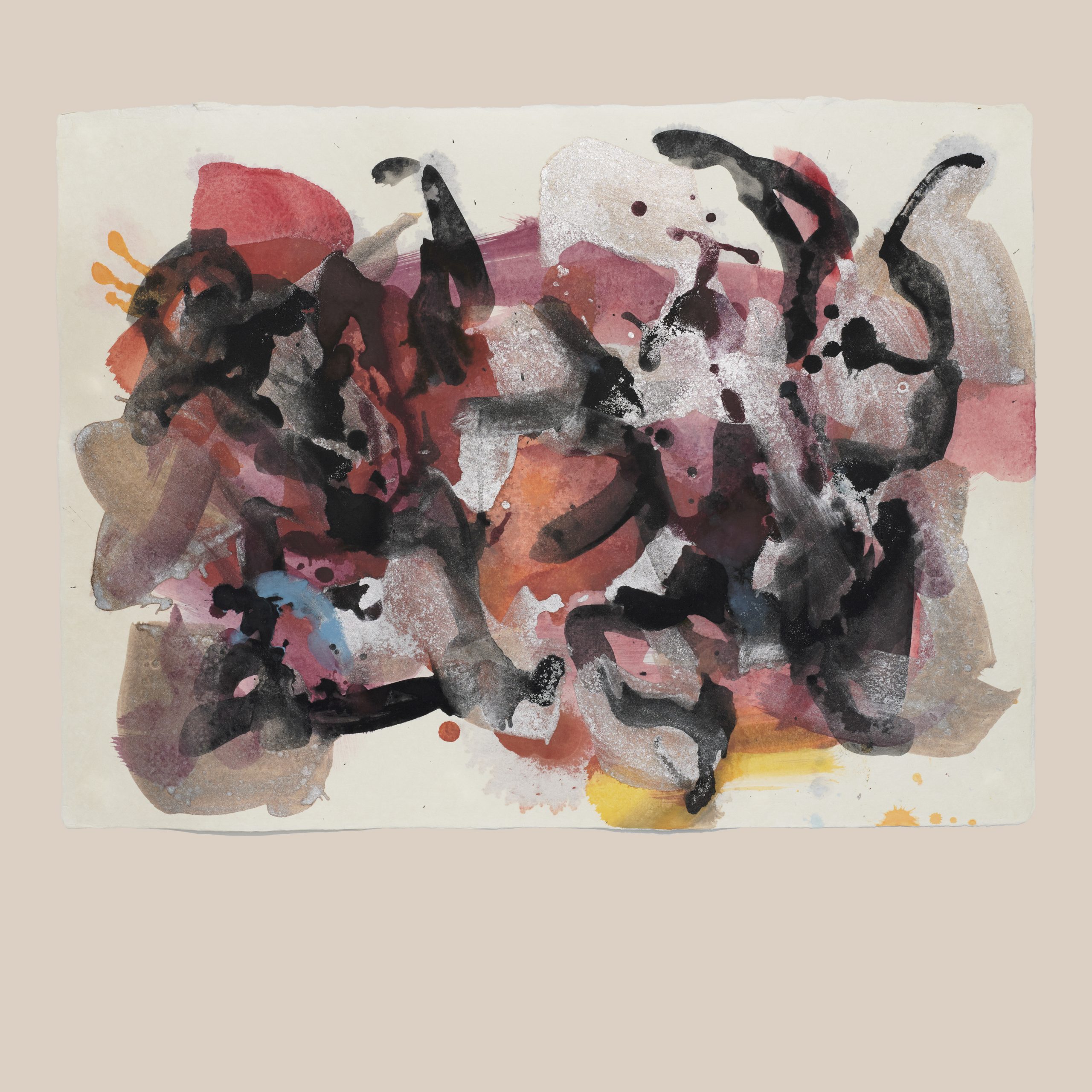When wildfires in California ignited in summer of 2020, and the skies filled with ash and smoke, I began to paint abstracted visions of these conflagrations – at first as works on paper, and then, shifting scale and substrate, works on linen at up to six by twelve feet. With their brushstrokes, pours, erasures, and stains, these pictures still reference landscapes — sites of memory, zones of environmental disaster —but also, at times, the edge of the ocean, the desert sky at dawn, places of safe harbor and renewal.
Two early paintings in this series, After Paradise I and After Paradise II, are named for the town of Paradise, California, which was destroyed in the Camp Fire of 2018. Eighty-five people lost their lives, and nineteen thousand buildings were destroyed. As I write this several years later, the wildfire season is raging in the American west, as well as in Turkey, in Italy, in Greece, even in Siberia. The destruction of Paradise is the condition we are in, locally and globally. As with all my work, I am looking to the destruction of both natural and human-made worlds, to ask questions about survival and loss, and about what we can attempt to control versus what falls beyond that domain.

